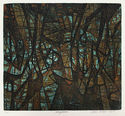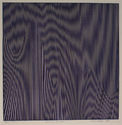
19th, 20th & 21st Century Fine Prints
707-546-7352 · fax 707-546-7924 · web: www.annexgalleries.com · email: artannex@aol.com
Jean Lodge Biography
Jean Lodge
American
1941
Biography
Jean Lodge, painter, printmaker, and teacher, was born in Dayton, Ohio in 1941. She attended Miami University, Oxford, Ohio, where she received her B.A. in literature in 1963. Following graduation, she moved to Europe, attending the Oscar Kokschka school in Salzberg, Austria, and the Ruskin School at Oxford, where she would later become director of the printmaking department. In 1965 she left for Paris to study with Stanley William Hayter at his experimental workshop, Atelier 17. She remained in France for three years, establishing her own printmaking workshop with fellow printmaker Angelica Caparoso. In 1978 she returned to teach at the Ruskin School at Oxford University.
Lodge exhibits internationally, and her work is represented in the collections of the Bibliotheque nationale de France; Ashmolean Museum, Oxford; City of Paris; Museo Nacional del Grabado, Buenos Aires; Royal Library of Belgium, Brussels; Museum of Fine Arts, Brest; Museum of Fine Arts, Caen; Museo di Pescia, Italy; Free Library of Philadelphia, USA; Boston Public Library, USA; National Gallery of Art, USA; Springfield Art Center, USA; St. John's College, Oxford, Pembrook College, Oxford; Museo della xilografía, Venice; National Library of Luxembourg.
Lodge wrote the following passage in 1981 for the Oxford Gallery publication For Stanley Wm. Hayter on his 80th Birthday:
“I worked with Hayter in Atelier 17 from 1966 to 1969; the experience influenced my whole conception of art. The intensity and excitement in the Atelier came from Hayter’s insistence on using controlled ‘experiments’ to create unforeseen images. ‘If you already know what it is going to look like, there is no point in doing it.’ For Hayter making pictures is a profound, sometimes amusing and always daringly imaginative ‘game.’ It is played on the edge of the visual unknown and may lead to startling results. ‘If it looks out of balance, unbalance it even more.’ He provoked me to look for movement, surprise, the unexpected ... to take pictorial risks and to avoid predictable stability and harmony. Bill’s own paintings and prints are constantly evolving, changing. In this sense he is younger in spirit than most of the artists working around him. Once he reaches a solution he always moves on to new research; art is adventure, forward-looking, driving into the unknown.”



